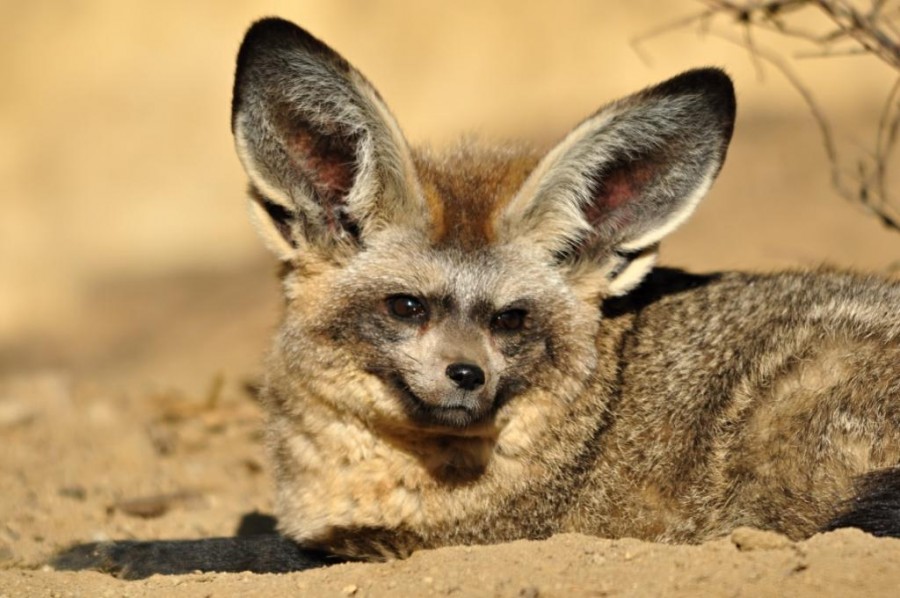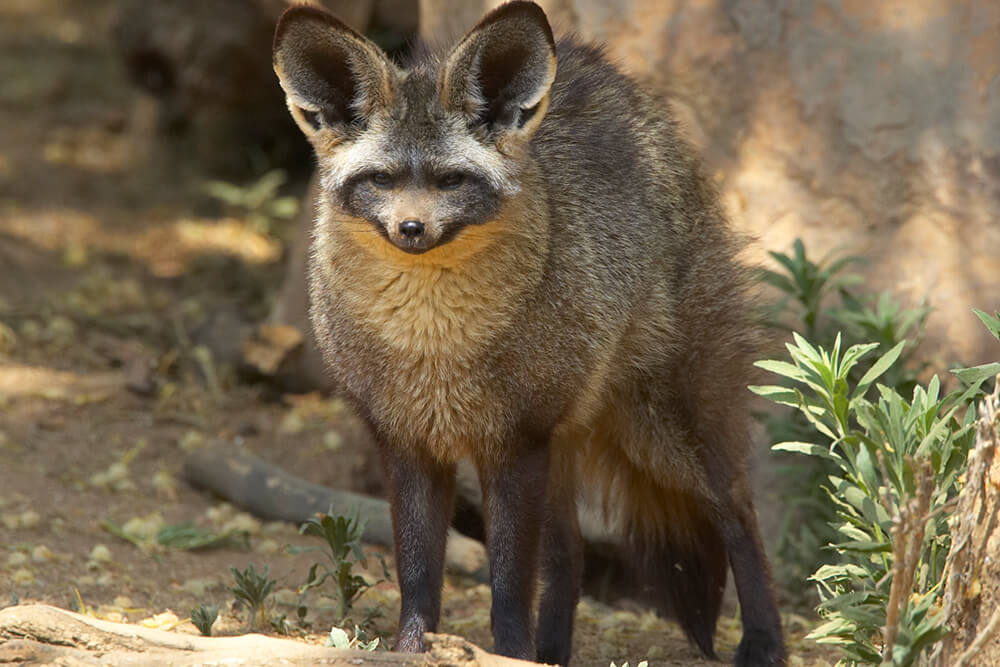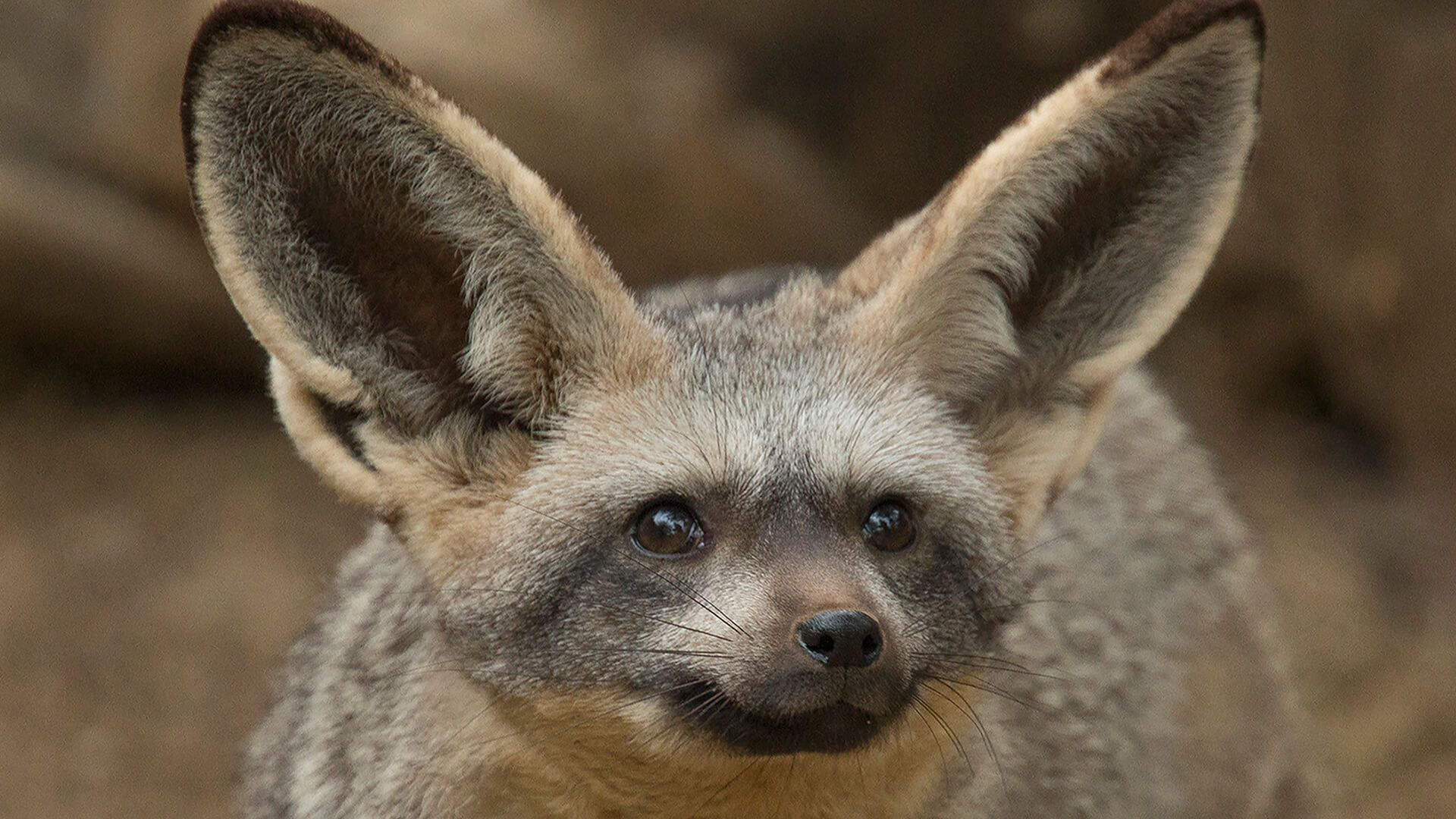The Bat-Eared Fox: Savannah's Unsung Insectivore
**Table of Contents** * Unveiling the Bat-Eared Fox: A Quick Overview * Scientific Classification and Etymology * A Portrait of Uniqueness: Physical Characteristics * Where the Ears Lead: Distribution and Habitat * A Map of Their Range * Life in the Burrow: Lifestyle and Social Behavior * Communication and Family Bonds * The Insectivore's Feast: Diet and Nutrition * Love in the Wild: Mating Habits and Reproduction * Ecological Role and Evolutionary Journey * A Relatively Young Canid * Facing the Future: Conservation Status and Threats * Protecting a Unique Species * Conclusion
Unveiling the Bat-Eared Fox: A Quick Overview
The bat-eared fox, often an overlooked gem of the African plains, is a fascinating subject for anyone interested in wildlife. Its existence challenges our typical perceptions of canids, revealing a creature perfectly adapted to its specific ecological niche. To truly appreciate this animal, we must first understand its place in the biological world, from its scientific lineage to its general characteristics. These animals are a testament to nature's incredible diversity, showcasing unique features and behaviors that set them apart from their more common fox cousins. Their presence in the savannah is a subtle but significant one, influencing the delicate balance of insect populations and contributing to the overall health of the ecosystem.Scientific Classification and Etymology
The scientific name for the bat-eared fox is *Otocyon megalotis*. Breaking down this name offers a delightful insight into its most prominent feature. The genus name, *Otocyon*, comes from the Greek words "Otus," meaning ear, and "cyon," meaning dog. This perfectly encapsulates the animal's defining characteristic: a dog-like creature with remarkably large ears. The species name, *megalotis*, further emphasizes this, translating to "large-eared." This precise naming reflects the scientific community's recognition of its unique auditory adaptations. Classified within the family Canidae, which includes dogs, wolves, and other foxes, the bat-eared fox occupies a distinct subfamily, Otocyoninae, or sometimes placed within Vulpes (true foxes) depending on the classification system. This classification highlights its evolutionary divergence from other canids, particularly in its dental structure and specialized diet. While it shares some general canid traits, its unique adaptations have led scientists to place it in a category of its own, underscoring its evolutionary journey and specialized role.A Portrait of Uniqueness: Physical Characteristics
The bat-eared fox is immediately recognizable due to its namesake feature. As their name suggests, they have huge, wide ears that can be up to 12 cm (4.7 inches) in length. These ears are not merely for show; they are highly specialized tools for detecting the subtle sounds of insects moving underground, a crucial adaptation for their unique diet. The rest of their body is relatively small, growing to a length of about 80 cm (including the tail), with a shoulder height of around 30-40 cm and weighing between 3 to 5 kg. Their fur is typically tawny or yellowish-brown, with darker markings on the legs, tail tip, and the outer surfaces of those impressive ears. The throat and underparts are pale, often a creamy white, providing a subtle contrast to their darker upper coat. Beyond their ears, another striking physical characteristic of the bat-eared fox is its dentition. These foxes have 48 teeth, which is more than most mammals, and specifically, 6 more than any other canid. This unique dental formula is directly linked to their specialized diet. While most canids have powerful canines and carnassials for tearing meat, the bat-eared fox possesses numerous small, sharp teeth perfectly suited for crushing the exoskeletons of insects, particularly termites and dung beetles. This dental specialization is a prime example of evolutionary adaptation, allowing them to efficiently process their preferred food sources. Their agility is also notable; they are known for their ability to "pronk," a unique bounding gait where all four feet leave the ground simultaneously, often used when playing or to survey their surroundings.Where the Ears Lead: Distribution and Habitat
The bat-eared fox is primarily found in two distinct populations across Africa. The larger population inhabits the arid and semi-arid regions of East Africa, including countries like Somalia, Ethiopia, Kenya, Uganda, and Tanzania. The smaller, more southerly population is found in Southern Africa, encompassing parts of South Africa, Botswana, Namibia, and Zimbabwe. These two populations are geographically separated by a significant stretch of woodland and forest, which is unsuitable habitat for the species. Their preferred habitat consists of short-grass plains, savannas, and arid scrublands. These open environments are crucial for their foraging strategy, as they allow the foxes to easily detect and locate their insect prey. They thrive in areas with low vegetation, which facilitates their unique auditory hunting technique. In order to avoid the heat of the day, especially in scorching regions like South Africa, bat-eared foxes often go into the shade of acacia trees, utilizing the sparse cover available. They are often found in close proximity to large herbivores, like zebras, wildebeest, and water buffalo. This seemingly coincidental association is, in fact, a vital ecological connection, as these large grazers provide the perfect environment for the bat-eared fox's primary food source.A Map of Their Range
While a physical map cannot be embedded here, visualizing their distribution would show two distinct blobs on the African continent. The East African range stretches from the Horn of Africa southwards, while the Southern African range covers the drier western and central parts of the sub-continent. These areas are characterized by well-drained soils, which are ideal for digging the burrows that serve as their homes and safe havens. The availability of suitable insect prey, particularly termites and dung beetles, is the primary driver of their distribution, directly linking them to the ecological processes of the savannah.Life in the Burrow: Lifestyle and Social Behavior
Unlike many other fox species that are largely solitary, the bat-eared fox exhibits a fascinating social structure. They are primarily nocturnal or crepuscular (active during dawn and dusk), especially in warmer regions, to avoid the intense heat. However, in cooler areas or during the winter months, they may also be active during the day. They live in groups, often consisting of a monogamous pair and their offspring, forming small family units. These families often share a network of burrows, which they either dig themselves or take over from other animals like aardvarks. These burrows serve as safe havens from predators, extreme weather, and as nurseries for their young. Their daily lives revolve around foraging for insects and maintaining their social bonds. While foraging, individuals often spread out, but they remain within earshot of each other, constantly communicating through soft calls and body language. When not foraging, they spend considerable time resting in their burrows or in the shade of trees, particularly during the hottest parts of the day. Their lifestyle is a delicate balance between individual survival and the benefits of group living, allowing them to collectively defend territory, raise young, and share resources.Communication and Family Bonds
Communication within bat-eared fox families is subtle but effective. They use a variety of vocalizations, including soft chirps, trills, and barks, to maintain contact, warn of danger, and express contentment. Body language also plays a significant role, with tail movements, ear positions, and facial expressions conveying different messages. They are known to engage in playful interactions, especially the young, which helps solidify social bonds and develop essential survival skills. Family bonds are strong, with both parents actively participating in raising the pups. The male often takes on a significant role in guarding the den and foraging for food for the nursing female and young. This cooperative breeding strategy is relatively rare among canids and highlights the importance of pair-bonding and family cohesion for the survival of the species. Find out how it lives in groups, digs burrows, and communicates with its family – it's a testament to their complex social intelligence.The Insectivore's Feast: Diet and Nutrition
The diet of the bat-eared fox is highly specialized, distinguishing it from most other canids that are opportunistic omnivores or carnivores. While they will occasionally consume small rodents, birds, or reptiles, their primary food source, making up over 80% of their diet, consists of insects. Termites, particularly harvester termites, are a staple, along with dung beetles and their larvae. This dietary preference is directly linked to their unique physical adaptations, especially their large ears and specialized teeth. Their enormous ears are not just for hearing; they are finely tuned instruments that allow the fox to pinpoint the location of insect larvae and termites underground. They listen for the faint rustling sounds of insects moving beneath the soil or within dung piles. Once a sound is detected, the fox will rapidly dig with its forepaws to unearth its prey. Because bat-eared foxes love to snack on dung beetles, an insect whose life cycles are closely interconnected with herbivore feces, these animals often hang out around large herbivores, like zebras, wildebeest, and water buffalo. The presence of these grazers ensures a constant supply of dung, which in turn supports a thriving population of dung beetles, providing a readily available food source for the foxes. This symbiotic relationship highlights their integral role in the savannah's nutrient cycling. Their 48 teeth, more than any other canid, are perfectly designed for this insectivorous diet. These numerous, small, and sharp teeth are ideal for crunching through the hard exoskeletons of insects, allowing for efficient digestion and nutrient absorption. This dental specialization is a key evolutionary adaptation that has allowed the bat-eared fox to carve out a unique ecological niche, minimizing competition with other predators for larger prey.Love in the Wild: Mating Habits and Reproduction
One of the most distinctive aspects of the bat-eared fox's social behavior is its mating strategy. Unlike many other canids, which may form temporary pair bonds or be more promiscuous, the bat-eared fox is largely monogamous. Pairs typically stay together for life, raising multiple litters over their lifespan. This strong pair bond is crucial for the successful raising of their young, as both parents contribute significantly to parental care. The breeding season varies depending on the geographical location, often coinciding with the availability of abundant insect prey, usually after the rainy season. After a gestation period of approximately 60-70 days, the female gives birth to a litter of 2 to 6 pups in an underground den. The pups are born blind and helpless, relying entirely on their parents for the first few weeks of their lives. Both parents actively participate in raising the young, with the male often taking on the primary role of guarding the den and foraging for food while the female nurses the pups. This shared responsibility is vital for the survival of the offspring, especially in environments where resources can be unpredictable. The pups are weaned at around 6-9 weeks and begin to forage with their parents, learning essential hunting and survival skills. They typically reach sexual maturity by one year of age, though they may remain with their family group for longer before dispersing to find their own territories and mates.Ecological Role and Evolutionary Journey
The bat-eared fox plays a significant, though often underestimated, role in the ecosystems it inhabits. As a specialized insectivore, it helps to control populations of termites and dung beetles. Termites, while important decomposers, can also be agricultural pests, and the foxes help keep their numbers in check. Dung beetles are crucial for nutrient cycling, breaking down herbivore waste and returning nutrients to the soil. By preying on these insects, the bat-eared fox contributes to the health and balance of the savannah ecosystem, preventing any single insect population from becoming overly dominant. Their presence is an indicator of a healthy grassland environment, rich in the insect life that sustains them. Their unique dietary niche also means they face less direct competition with other larger predators for food, allowing them to coexist effectively within complex food webs. This specialization is a testament to their evolutionary success, enabling them to thrive where other canids might struggle.A Relatively Young Canid
Surprisingly, despite their unique adaptations, bat-eared foxes are relatively young in evolutionary terms. Genetic studies suggest that they are only about 800,000 years old, much younger than most mammals on the savannah. This relatively recent emergence highlights a rapid evolutionary divergence, likely driven by the abundance of their preferred insect prey and the development of their specialized foraging techniques. Their existence is a compelling example of how quickly species can adapt and diversify to fill specific ecological niches, even within a relatively short geological timeframe. This makes them a fascinating subject for evolutionary biologists studying adaptive radiation.Facing the Future: Conservation Status and Threats
Currently, the bat-eared fox is listed as "Least Concern" by the International Union for Conservation of Nature (IUCN). This classification suggests that the species is not facing immediate threats to its survival on a global scale, thanks to its widespread distribution and relatively stable populations. However, this status does not mean they are entirely free from challenges. Like many wildlife species, bat-eared foxes face localized threats that can impact their populations. The primary threats include habitat loss and fragmentation due to agricultural expansion, human settlement, and infrastructure development. As grasslands are converted for other uses, the foxes lose their foraging grounds and access to their insect prey. While they are not typically hunted for their meat or fur on a large scale, localized hunting or persecution can occur, particularly if they are perceived as a threat to livestock, which is rare given their diet. Another significant concern for bat-eared fox populations is disease. The most prevalent diseases that affect these animals are canine parvovirus, canine distemper virus, and rabies. These diseases, often transmitted from domestic dogs, can decimate local fox populations, especially in areas where human and wildlife interfaces are increasing. Climate change also poses a long-term threat, as changes in rainfall patterns and temperatures could impact insect populations, directly affecting the foxes' food supply.Protecting a Unique Species
Despite their "Least Concern" status, conservation efforts remain vital to ensure the long-term viability of bat-eared fox populations. Organizations like the African Wildlife Foundation (AWF) play a crucial role in protecting this unique species from habitat loss, hunting, and diseases. Their work often involves: * **Habitat Protection:** Establishing and maintaining protected areas and wildlife corridors to preserve critical grassland habitats. * **Community Engagement:** Working with local communities to reduce human-wildlife conflict and promote sustainable land use practices. * **Disease Surveillance and Vaccination:** Monitoring disease outbreaks and, where feasible, implementing vaccination programs for domestic animals to prevent spillover to wildlife. * **Research and Monitoring:** Conducting studies to better understand bat-eared fox ecology, population dynamics, and the impact of threats. Zoos and safari parks also contribute to conservation through captive breeding programs and public education. For instance, Lando, a bat-eared fox born on May 15, 2023, at the San Diego Zoo Safari Park in California, represents such efforts. He came to the park in 2024 at the recommendation of the Association of Zoos and Aquariums’ Species Survival Plan (SSP), a program designed to maintain healthy and genetically diverse populations of endangered species in captivity. Lando is a little skittish and can often be found near his exhibit mate, Ziggy, providing visitors with a glimpse into the life of these remarkable animals and raising awareness about their conservation needs. These programs are crucial for maintaining genetic diversity and serving as an assurance population should wild populations face severe decline.Conclusion
The bat-eared fox, with its extraordinary ears, specialized diet, and complex social behaviors, is truly one of the most captivating canids of the African savannah. From its unique dental structure to its monogamous mating strategy and its crucial role in controlling insect populations, every aspect of its life is a testament to the power of evolutionary adaptation. Though often overshadowed by larger, more charismatic megafauna, the bat-eared fox holds a vital place in its ecosystem, demonstrating how even a relatively small creature can have a profound impact. Understanding and appreciating the bat-eared fox is not just about marveling at its unique features; it's about recognizing the intricate web of life that sustains our planet. While currently stable, their future, like that of many species, depends on ongoing conservation efforts to mitigate habitat loss, disease, and the impacts of climate change. By supporting organizations dedicated to wildlife protection and by spreading awareness about these incredible animals, we can all contribute to ensuring that the distinctive silhouette of the bat-eared fox continues to grace the African plains for generations to come. What are your thoughts on the incredible adaptations of the bat-eared fox? Share your comments below, and don't forget to explore more fascinating wildlife stories on our site!
Bat-Eared Fox - Facts, Habitat, Diet, Life Cycle, Pictures

Bat-eared Fox | San Diego Zoo Animals & Plants

Bat-eared Fox | San Diego Zoo Animals & Plants